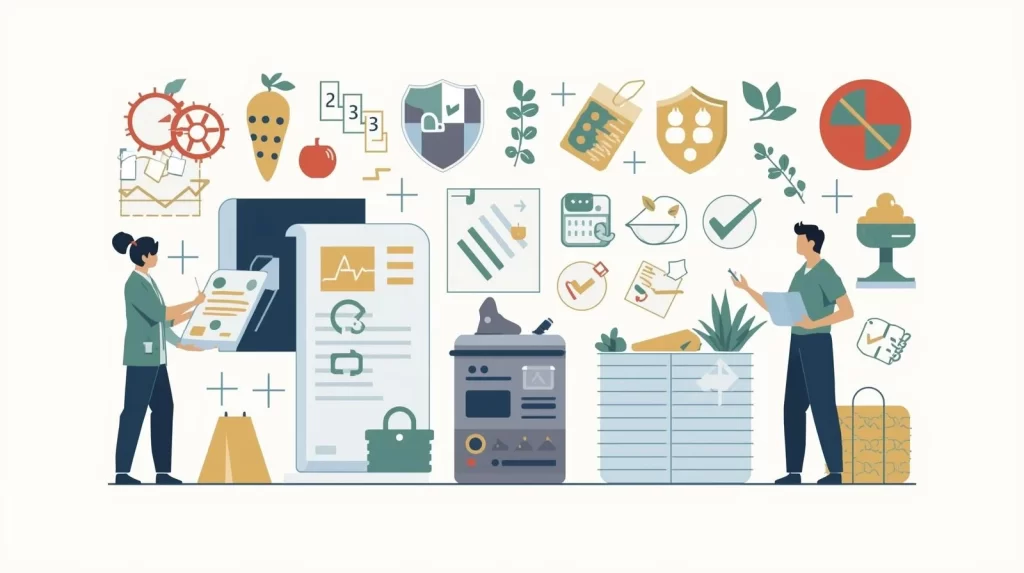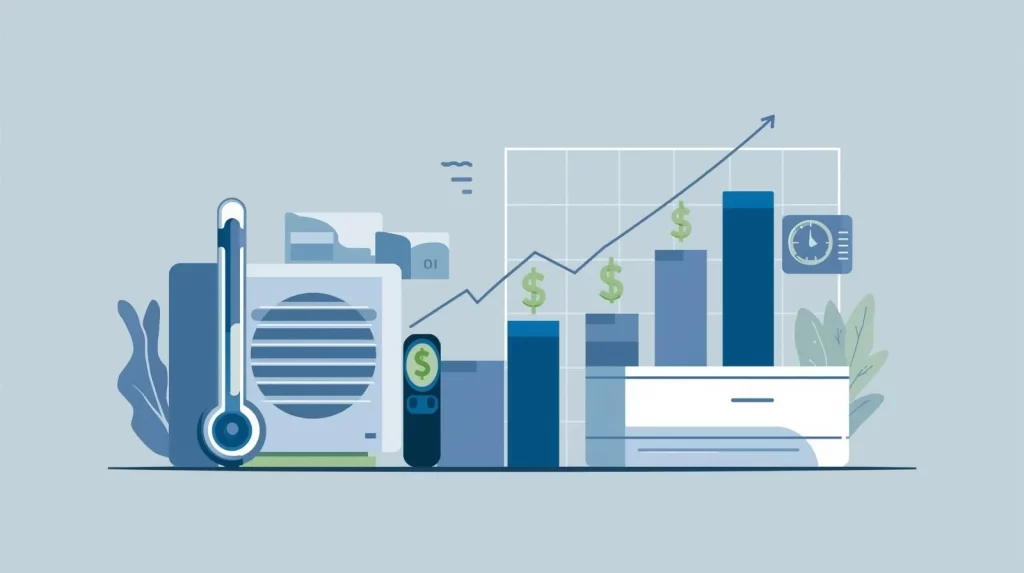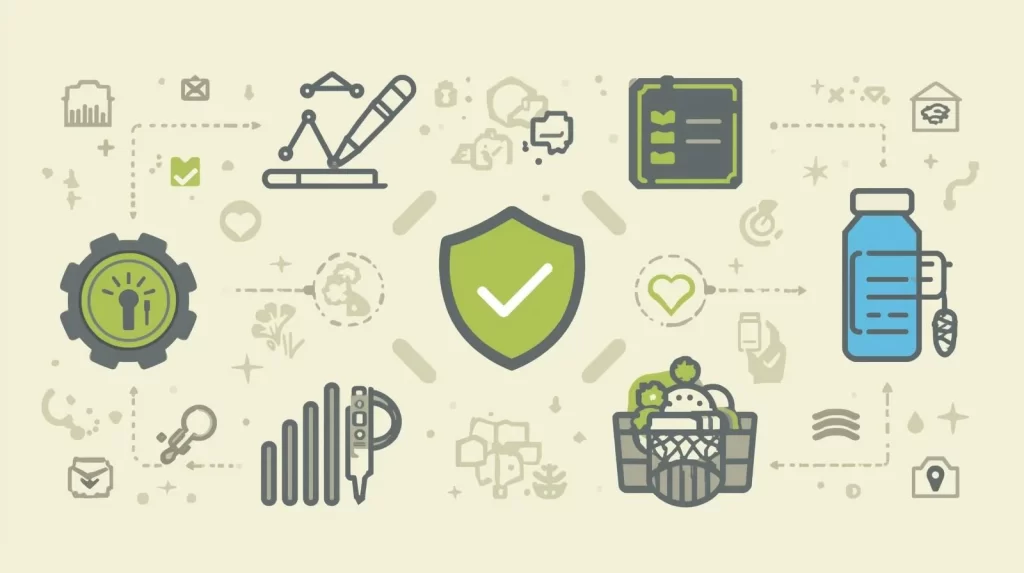In the contemporary food industry, food safety risk assessments are no longer merely a regulatory ‘tick box’; they represent the scientific foundation of modern food safety systems. As food supply chains become increasingly complex, manual techniques for hazard evaluation and risk characterization are proving inadequate. Spreadsheets, paper-based audits, and ad hoc scoring result in inconsistencies, human error, and compliance gaps.’ Digital FSMS solutions are rapidly becoming the gold standard because they bring rigor, consistency, and real-time control to food safety software risk assessment.
With Jadian’s software, food companies can transform their food safety risk assessments from slow, subjective scoring to continuous, audit-proof, data-driven control.
Understanding the 4 Important Steps of Risk Assessment
To appreciate why digital automation is revolutionary, you first need to understand the core scientific process behind a proper HACCP risk assessment. There are four fundamental steps:
- Hazard Identification. This is the process of figuring out what might go wrong. Hazards are any biological, chemical, or physical agents, or any substance that could place a theoretical consumer at risk should anything go wrong and it not be appropriately controlled. That means doing some detective work and seeking potential contamination points in ingredients, processes, suppliers, and local environmental factors.
- Hazard Characterization. Once a hazard is identified, the next step is to characterize it. How serious could it be if someone were harmed? For example, how dangerous is it to eat this pathogen? This step relies on toxicological data, microbiological studies, and evidence of foodborne disease.
- Exposure Assessment. This step estimates the likelihood that people will be exposed to the hazard and at what level. It looks at how much people eat, how much of it is included in ingredients, how often it is eaten, how it is processed, and how much remains in the finished product.
- Risk Characterization. Finally, risk characterization considers the conclusions drawn in the previous steps and, in effect, adds hazard identifications, severity, and exposure in order to arrive at the overall assessment of food safety risks. This informs decision-makers clearly as to which food safety risks are the likeliest to be serious and supplies them with the best recommended target for mitigation.
These scientific pillars are embedded in global food safety regulations and standards, including HACCP and the FSMA Food Safety Plan. Without rigor in these four steps, food safety risk assessments become weak, inconsistent, and unreliable.
The Practical Tool: From Scientific Theory to the Risk Matrix
Turning these four scientific steps into actionable food safety management is not simple. The risk matrix serves as a practical tool to bridge theory and action.
A risk matrix is a two-dimensional chart where likelihood (probability) is plotted against severity (impact). The process works as follows:
- Assign a score for how likely a hazard is to occur based on exposure assessment.
- Assign a score for how severe the potential consequences could be based on hazard characterization.
- Combine the scores to place each hazard into a risk category, such as low, medium, high, or critical.
The risk matrix assists QA teams in pinpointing which hazards demand immediate control, which should be monitored, and which are within the company’s capacity to manage. It offers actionable insights.
Right now, confusing spreadsheets can lead to slow assessments, inconsistent results, and poor audit trails. These difficulties will undermine the credibility of the food safety system and leave the organization exposed.
Automating the Risk Matrix: Goodbye Subjective Scoring
Jadian’s digital food safety software risk solution resolves these issues.
- Consistency across all locations. The system standardizes HACCP risk assessment scoring so that every user and every site follows the same methodology. There is no room for personal bias or subjective interpretation.
- Objective, audit-proof assessments. Rules-based scoring means defensible assessments. An auditor can trace a risk score to specific criterion in the system, not blindly trust a cell in a spreadsheet.
- Dynamic, real-time updates. If something changes, like when a supplier’s compliance documents expire, the system can dynamically change food safety risk assessments when that risk criterion is triggered.
- Alerts and workflow integration. When risk levels change, the system generates proactive alerts and triggers review workflows. QA teams are notified immediately and can take corrective action without delay.
- Centralized documentation. All food safety risk assessments are stored, versioned, and accessible within Jadian’s web-based digital FSMS solutions, improving traceability, accountability, and governance.
These features eliminate subjectivity, speed up decision-making, and maintain a clear, audit-ready record of how risks are scored and controlled.
How Risk Assessment Supports FSMA and GFSI
Risk assessment is mandatory and central to food safety frameworks.
- HACCP (Hazard Analysis and Critical Control Points): The first principle of HACCP is to conduct a hazard analysis. This makes HACCP risk assessment the foundation for defining critical control points and setting limits.
- FSMA Food Safety Plan: Under FSMA, food businesses are required to build an FSMA Food Safety Plan that goes beyond HACCP. Preventive controls, supply chain management, and monitoring are all based on scientifically sound food safety risk assessments.
- GFSI Compliance: Auditors for SQF, BRCGS, FSSC 22000, and other GFSI-recognized standards always check GFSI compliance software and risk assessments. They look for documented hazard identification, risk scoring, and evidence that the assessment informs control plans.
By automating risk assessments with Jadian, your FSMS aligns with HACCP principles, FSMA requirements, and GFSI certification expectations. The risk assessment becomes a living document that drives real food safety decisions.
From Manual Analysis to Proactive Control
Digitizing your food safety risk assessments enables companies to take the most complex part of food safety, the risk analysis, out of flaky spreadsheets and into a continuous, controlled digital system. In manual systems risk scoring is often done in Excel, meaning formula errors, subjective judgements and variation between team members, weak audit trails, static assessments that are only updated at audit time, and records lying on pieces of paper or random drives, so it is hard to know what version you are looking at.
With Jadian’s digital FSMS, this process is transformed. The Risk Matrix scoring becomes standardized and system-enforced, ensuring consistency and objectivity across all users and locations. Assessments are no longer static and have live updates whenever a condition changes, predominantly if a supplier’s compliance documents expire. Everything is stored in one place, version controlled, and sits in the cloud with a clearly defined audit trail. Food safety risk assessments are no longer one-off. They become a living, breathing, continuous process that is embedded in day-to-day activity.
With Jadian, you move from a reactive compliance mindset to proactive control. Teams actually identify, score, and mitigate hazards in advance of them causing harm, strengthening the safety of food overall, supporting HACCP risk assessment, meeting FSMA Food Safety Plan requirements, and being prepared for GFSI compliance software audits.
Conclusion
In a world where food safety regulations are increasing and supply chains are rapidly changing, relying on manual food safety risk assessments is no longer enough. The scientific rigor of risk analysis must be matched with the consistency, transparency, and real-time control provided by digital FSMS solutions.
With Jadian, food businesses can revolutionize the risk assessment process. Automated Risk Matrix, enforcing consistent scoring and enabling continuous visibility into hazards—QA teams can make smarter, faster, and more defensible food safety software risk decisions.
By turning risk assessment into a proactive, data-driven process, Jadian builds food safety, increases trust, and ensures operations keep pace with regulatory demands.
FAQs
Q1: What exactly is a “food safety risk assessment”?
It’s a scientific process for estimating the likelihood and severity of hazards in food and finding ways to control them. There are components for hazard identification, hazard characterization, exposure assessment, and risk characterization.
Q2: Why not just keep using Excel or manual spreadsheets?
Manual methods can yield errors, lack consistency, and leave the results up to user subjectivity. Different users can score the same hazard differently, and spreadsheets don’t have proper version control and audit trails. Over time you lose credibility, and you might leave yourself open to compliance gaps.
Q3: How does Jadian’s software improve risk scoring?
Jadian centralizes HACCP risk assessment logic across your teams and locations so that assessments are consistent, objective, and defensible. The system will automatically adjust the score when conditions change and alert you when an adjustment triggers an alert for timely action.
Q4: Is risk assessment only relevant for HACCP?
Risk assessment is fundamental to HACCP, FSMA Food Safety Plan, and GFSI auditing. It drives the preventive controls, monitoring, and documentation that auditors review each time.
Q5: How quickly can Jadian be implemented in a food business?
Implementation speed depends on existing processes, but compared to spreadsheets or paper systems, Jadian can be set up quickly because it is web-based and centralizes inspections, risk scoring, document control, and alerts.






